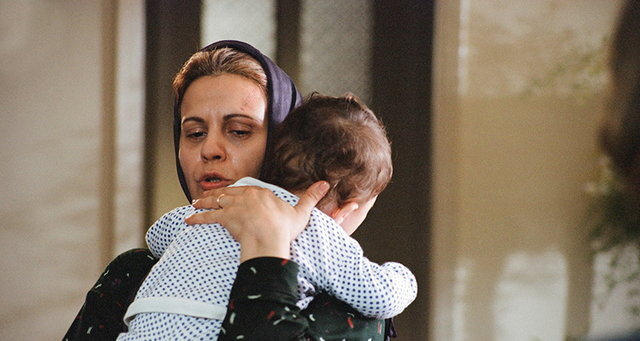Tehran – Since 1948, the issue of land seizure and evacuation of Palestinian residents remained a central and tragic theme when the United Nations officially recognized Israel.
Over the past 77 years, this ongoing catastrophe, known as Nakba, has influenced countless works of literature, art and film aimed at remembering and raising awareness about the Palestinian struggle.
Many people are unaware of the true depth of what has happened to Palestine since 1948. It is mistakenly believed that the tragedy only began on October 7, 2023, or with a recent escalation. However, the root of this suffering dates back to 1948. This is Nakba’s year and the decisive moment of forfeiture and exile that sets the stage for decades of resistance and resilience.
Despite the many media outlets addressing this history, art and storytelling often have deeper emotional impacts. I praise the feelings and reflections that cannot be achieved through news reports alone.
In this context, films, particularly narrative films, have a unique power to humanize this history. They create emotional connections and provide viewers with an internal experience of loss, displacement and hope. But surprisingly, few films tackle the Palestinian Nakba directly. Most are produced outside of Palestine in neighbouring countries due to restrictions, censorship, and complex political landscapes that prevent filming within occupied territories.
Among these rare films, Iranian director Seyphora Papa’s 1995 famous drama The Survivor stands out as a compelling portrayal of the Palestinian experience. It vividly captures the sacrifices of emotional and human evacuation, making suffering accessible and personal.
“Survivor” is worth noting that it is explicitly one of the few films about Nakba. It tells a deep, personal story, focusing on the emotional wounds and memories of Palestinians who endured the catastrophe. What makes “survivors” particularly persuasive is their approach to art as an act of memory and storytelling. This film becomes a form of resistance. This is how Nakba’s memories of a world where mainstream Western media often ignore or alienate this history.
It’s not just a documentary, it’s a storytelling effort aimed at humanizing the abstract notion of displacement. Art and literature commemorate the struggle, highlighting how it functions as an important tool in fostering collective identities and ensuring that the stories of those who have been refuge are not erased.
The film is based on the novel “Back to Haifa” by Palestinian writer Gassan Kanafani. The story is set against the events of 1948, when Zionist militia began forcing Palestinian residents out of their homes under the leadership of figures like Simon (a character representing Israeli military authorities).
The story follows a Palestinian doctor, his wife and newborn son Farhan. On the day of the invasion, the doctor is caring for the patient, but the wife tends to be at home and babies. As violence escalates, the struggle for the survival of the family begins. The wife and husband try to reunite, but in the chaos they are killed by Zionist forces outside the house. Their young sons are left behind, captured and handed over to an Israeli couple, with Simon overseeing the transfer, highlighting the systematic forfeiture given to Palestinian families.
When the doctor’s mother learns of his son’s death, she approaches the Zionists and takes care of Farhan. She works as a nanny at her son’s former home. It is now being occupied by Zionists. Meanwhile, the doctor’s father secretly forms a group against Zionists. Ultimately, when the Zionists plan to go to another city to carry out the massacre, the doctor’s mother places the train bomb suitcase from her husband on the train. Holding Farhan in her arms, she jumps off the train when she explodes. The film concludes with her injured appearance and the image of Farhan crying.
Dad’s “Survivor” brilliantly portrays what’s going on in Palestine, conveying the ongoing tragedy not through visual sights but by imprinting deeply in the minds of viewers. The film symbolizes the loss of the role of an educated doctor in society, and is replaced by a helpless, defeated man. Farhan’s angel mother is replaced by an exploitative woman. But what remains constant is the figures of the doctor’s mother and Farhan, symbols of home and hope.
Through symbolic images, the supervisor powerfully conveys the suffering caused to the oppressed Palestinians. The climax of this artistry is the scene where a doctor and his wife are murdered by a Zionist in front of their home. They fall to the ground as if lying in bed, but their beds are Palestinian soil. The mother of the doctor, who symbolizes her homeland, sacrifices herself to save Farhan – changing hope and renewal, fighting the enemies of this land.
The film emphasizes that despite the bloodshed and suffering given to them by the Zionist forces, they cannot destroy their hometown and spirit of hope. It becomes all about resilience and resistance. No matter how cruel the homeland and the essence of hope are, it is difficult to remain unbreakable.
The “survivors” who poeticly capture the moments of catastrophe present this not only as history, but as a tragedy of livelihood and breathing. The film’s image is unforgettable, and its emotional depth comes from its focus on individual stories in a wider range of historical violence. It highlights the feeling of continuing to define Palestinian memory and resistance: the pain of loss, displacement, and the erasure of identity.
In a broader context, “survivors” exemplify how art and film can serve as important tools for memory and behaviorism. Western media and major international outlets often overlook or alienate Palestinian stories due to political pressure. Films like Survivor are challenges that express their silence, the Palestinian experiences, and maintain their memories for future generations. The film becomes a form of resistance, a word of mourning, and a call for justice.
Photo: Scene from Iranian director Seyphora Papa’s 1995 film “The Survivor”
sab/

